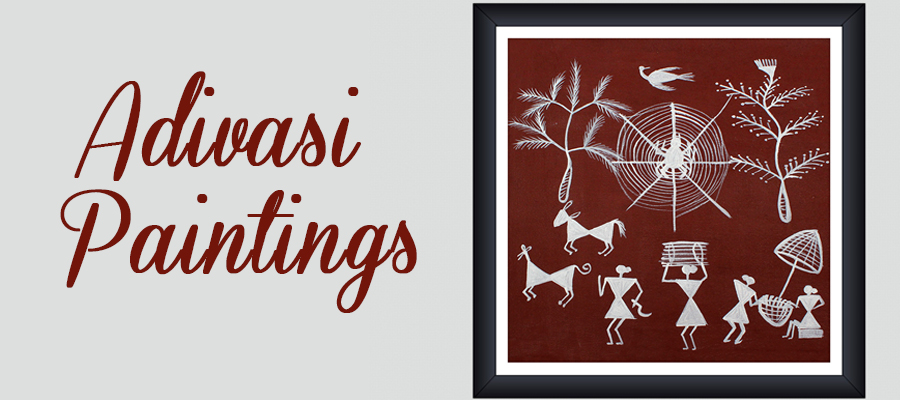
Tribal art is considered very special, especially in a country like India, where they are present in significant numbers. Their distinct culture and isolation in remote areas, have resulted in unique traditions, which is reflected often in their art forms. The Warlis are an indigenous tribe, generally known as Adivasis. They inhabit the mountainous and coastal areas of Maharashtra and Gujarat border region and the surrounding areas. In Telangana, certain tribes in Nalgonda too create these paintings while in Andhra, tribals of Seethampeta practice this art form.
The skillful brush stroke of the tribal artists who create the master pieces, are a delight to observe. The paintings are extremely rudimentary and these wall paintings consists of a very basic graphic vocabulary in the form of a circle, a triangle and a square. These tribal paintings are mostly monosyllabic.
The shapes like circle and triangle are based on the observation of nature, while the circle represents the sun and the moon. The shape of the triangle is mainly derived from the mountains and pointed trees. In these paintings, only square is related a different logic, denoting sacred enclosures or piece of land. The central motive of the ritual paintings involves scenes which portrays tribal activities like fishing and farming, as well as hunting, festivals and dances, and the natural environment like trees and animals. The bodies of humans and animals are represented by two triangles which are joined at the tip. The tribals make use of only white colour in paintings. The white pigment used is a mixture of rice paste and water while natural gum is used as the binding agent. The tribals use a chewed bamboo stick like a paintbrush. The wall paintings are usually done marking special occasions such as weddings or harvests.

